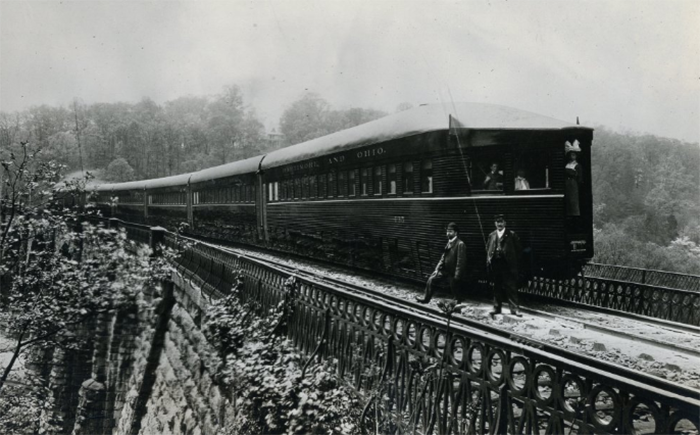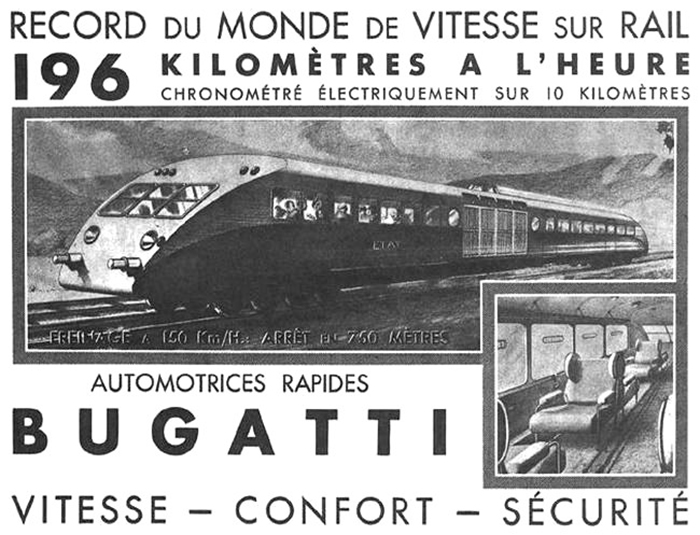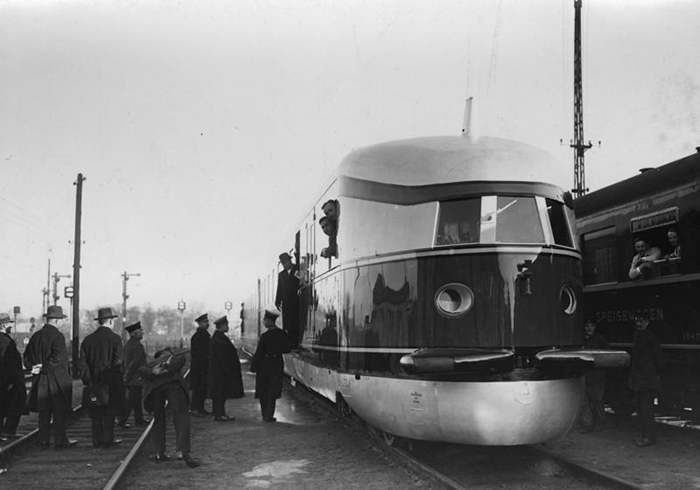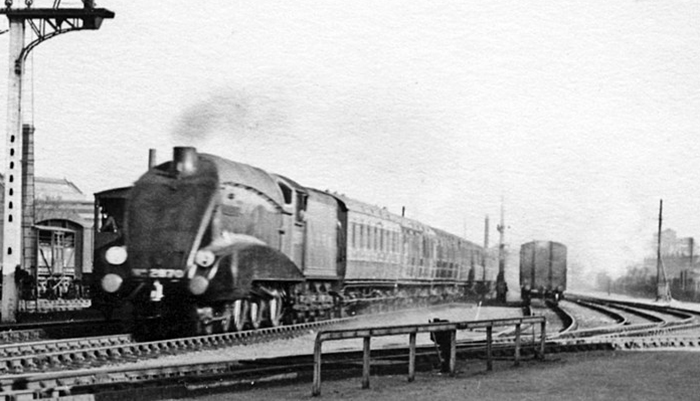

 STUART JORDAN looks at the development of streamlining on locomotives.
STUART JORDAN looks at the development of streamlining on locomotives.

Streamlined coaches on the Windsplitter.
The world's first known streamlined train was the 'Windsplitter', built by the Baltimore and Ohio Railway in 1900. The locomotive itself was not streamlined, but side valances were added to the tender and coaches. Unfortunately the experiment was deemed a failure as it had little effect in cutting wind resistance and didn't increase the efficiency of the locomotive.

Bugatti's Autorail.
The idea was picked up again in the 1930s, during the heyday of the Art Deco period and its offshoot style Streamline Moderne. Aerodynamics became more influential over the design of racing cars and one designer, Bugatti, produced a railcar for the French railways using this new science. Railway companies around the world began to introduce streamlined locomotives to long-distance and express services.

The Flying Hamburger.
The Flying Hamburger was a high-speed diesel twin-coach railcar introduced in 1932 that was used for express passenger services between Berlin and Hamburg. Developed using wind-tunnels, the train could travel the 178 miles between the two station in 138 minutes, at an average of 77mph. These speeds would not be equalled again until ICE trains were introduced on the route in 1997.
In Britain, both the LMS and LNER produced streamlined locomotives. The first ten LMS Coronation Class locomotives were built with streamlining, with five of these locomotives running on the Coronation Scot service from London Euston to Glasgow Central. The large surface area of the steel streamlining, however, made the locomotives susceptible to side winds which would push the wheel flanges against the rails.

Race to the North.
The LNER effort was the famous A4 Class, designed by Nigel Gresley, who was influenced by seeing the Flying Hamburger in Germany. These were introduced in 1935 to run the Silver Jubilee service between London King's Cross and Newcastle. The Coronation service to Edinburgh was introduced as LNER's entry to the 'Race to the North'. The most famous A4 is of course 4468 Mallard, which holds the world speed record for steam traction.

LNER B17 Class, looking very much like an A4.
LNER also streamlined two B17 Class locomotives for use on the East Anglian service between London Liverpool Street and Norwich. This was merely a publicity stunt to add prestige to travel between London and Norwich as the train did not travel fast enough to justify the streamlining.
In the modern era we are used to high-speed trains such as ICE, HST, TGV, and Eurostar being streamlined, but they owe a lot to the pioneers in the steam era.